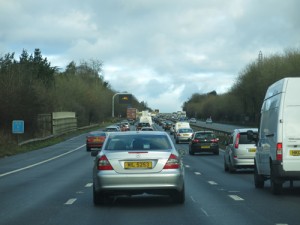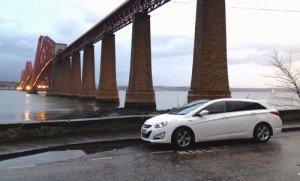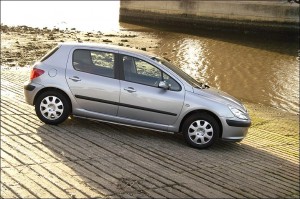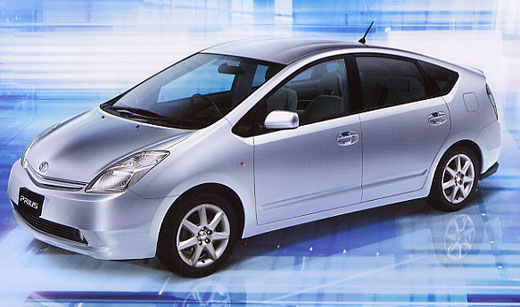The Prius C is indicative of Toyota having lost its hybrid way
I think the new Prius C is indicative of Toyota having lost its hybrid way.
I write that with a rather heavy heart: anyone who has read my stuff over a long period will know that I previously embraced and relished hybrid technology.
The first hybrid I ever experienced, around the year 2000, was an NHW10 grey-market Japanese import Prius – it blew me away with its refinement, quality and fuel economy.
Back in 2003 I new-car-tested a hybrid Honda Insight – we did 3,500 kilometres in four days. The fuel economy? Just 3.6 litres/100km. The original Insight is the most fuel-efficient car ever sold in Australia.
In 2004 I tested an NHW20 Prius over 5,400 kilometres in seven days; I then called it one of the most fascinating cars you can buy.
As a magazine tester of new cars (a role I no longer play) I also drove two models of the Honda Civic Hybrid, and the hybrid Lexus GS450H, Lexus RX400h and Lexus 600hL.
I own a first gen Honda Insight, and for years I owned an NHW10 Prius that I first supercharged, and then turbocharged.
But I’m not wedded to hybrid technology.
My current main car is a mildly-modified 2008 Skoda Roomster 1.9 turbo diesel. It gets fuel economy in my use that varies from the high-fours (in litres/100km) to about 6 litres/100km. And that from a relatively old and low-tech diesel design.
I haven’t driven the current model Prius, but I’ve experienced a Camry Hybrid- and wasn’t much impressed. The fuel economy wasn’t outstanding, and the car drove with an uninspiring feel.
But with the release of the Prius C, I thought that things might be very different.
The lightest (1120kg) and cheapest (AUD$23,990) hybrid Toyota sold in Australia, the Prius C has an official fuel economy rating of 3.9 litres/100km. That’s the same as its big brother Prius – but surely that must be a quirk of the testing system… with the C’s smaller size and mass, and lower total power, surely there’d be a benefit to real-world fuel economy?
And boasting a host of advanced technologies – including a new inverter, motor and battery – you’d expect that this to be as good in fuel economy as a hybrid Toyota gets.
Well that might be the case – but unfortunately, these days, it just isn’t good enough.
Today I visited a Toyota dealership. It wasn’t with just prurient intent: if the car did what it was supposed to, I was quite prepared to buy one.
The presented i-Tech model (a higher trim level that costs $26,990) was OK inside, although definitely nothing outstanding. The interior room was alright (a tall adult could sit [j-u-s-t] behind a tall driver); the digital instruments were clear; the seats comfortable; the load area pretty small (and the rear seats fold to give a pronounced step in the floor); and the double-DIN upgrade nav looks like it should cost only about $400 through eBay.
But hey, it’s a small car that isn’t priced at luxury levels.
On the road, with three adults and a seven-year-old in the car, the transmission refinement was good, the steering welcomingly much heavier in feel than previous Toyota (and Lexus) hybrids, and the power was – well, a bit disappointing. The last Prius I drove, now an old-model NHW20, could on green lights wheelspin its way across intersections – the current Prius C had not remotely enough low-down torque to do that. But, again, it was OK – but definitely not scintillating.
But the fuel economy? Oh dear.
In a gentle drive, about a third through urban conditions and the rest on 80 and 100 km/h freeways, the car massively disappointed. It started off at about 6 – 7 litres/100 (not a problem; it was a cold start) and then gradually dropped to about the mid-Fives. With the ultra-economy mode then engaged, it continued to drop – reaching a low of 4.6 litres/100 and then rising finally for a trip average of 4.7 litres/100 for the 20-odd kilometres.
Well, isn’t 4.7 litres/100 really good?
Only if you have no better comparisons…
My 1999 (read that again – 1999, that’s 13-year-old technology!) Honda Insight in similar conditions would, I’d guess, be in the mid-Threes – but that’s in a car that is much smaller (only two seats) and is also much lighter. So in many respects it’s not a fair comparison.
But what about my Skoda Roomster? It weighs about 200kg more than the Prius C, has much better performance, vastly more interior space – and like the Prius C, has 5-star crash test safety.
Since we’d taken the Roomster to the dealer, I immediately drove exactly the same road loop just undertaken in the Prius C. We didn’t have the salesman aboard, but apart from that, the conditions were as identical as it was possible to make them – same speeds, same roads, same traffic.
And the fuel economy of the Roomster? It came in at 4.9 litres/100km.
Seeing those figures: 4.7 for the cutting edge, small, 2012-model hybrid Prius C, and 4.9 for the much larger, old fashioned 2008-model diesel Roomster, suggests to me that in the real world, plenty of current small diesels will match the fuel economy of the Prius C.
For me, the Prius C could not be justified in any way as a replacement for my existing car – the Roomster.
And so then you wonder – for whom would the Prius C be justifiable over other fuel-efficient cars? After all, why buy a car that is demonstrably far more complex, and has a battery pack that will one day fail, when the raison d’etre of the hybrid – fuel economy – is no longer stunningly better than the others?
The above statement really indicates that Toyota has lost its way: that the hugely innovative and technologically incredibly brave step that occurred with the release of the NHW10 Prius at the end of 1997, the move that saw car makers the world-over stare in disbelief and then turn towards hybrids – well, that technology is now more about selling cars on a gimmick rather than through demonstrable real-world advantage.
What a bloody shame.

 Julian Edgar, 50, has been writing about car modification and automotive technology for nearly 25 years. He has owned cars with two, three, four, five, six and eight cylinders; single turbo, twin turbo, supercharged, diesel and hybrid electric drivelines. He lists his transport interests as turbocharging, aerodynamics, suspension design and human-powered vehicles.
Julian Edgar, 50, has been writing about car modification and automotive technology for nearly 25 years. He has owned cars with two, three, four, five, six and eight cylinders; single turbo, twin turbo, supercharged, diesel and hybrid electric drivelines. He lists his transport interests as turbocharging, aerodynamics, suspension design and human-powered vehicles.






